1. Listening
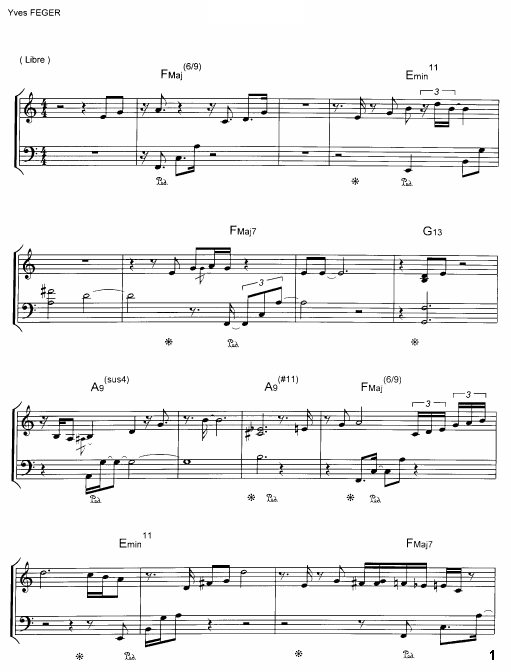
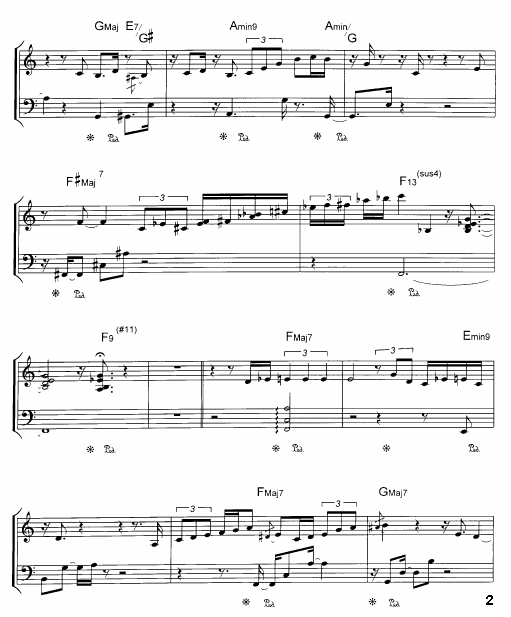
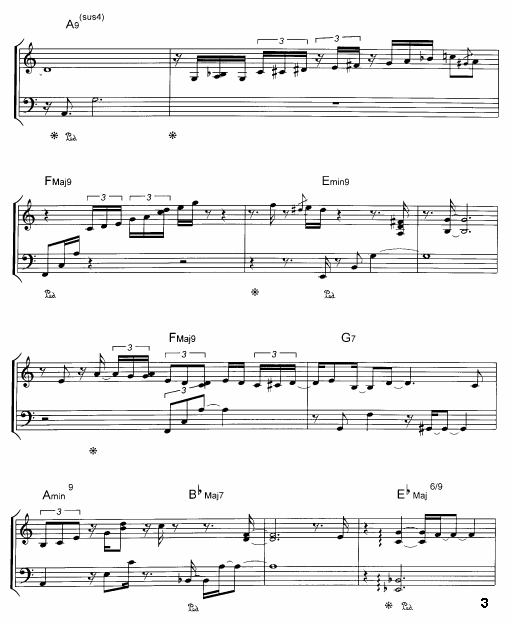
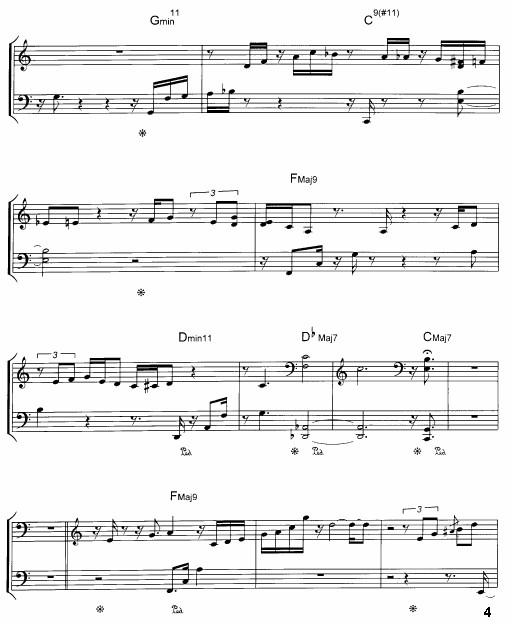
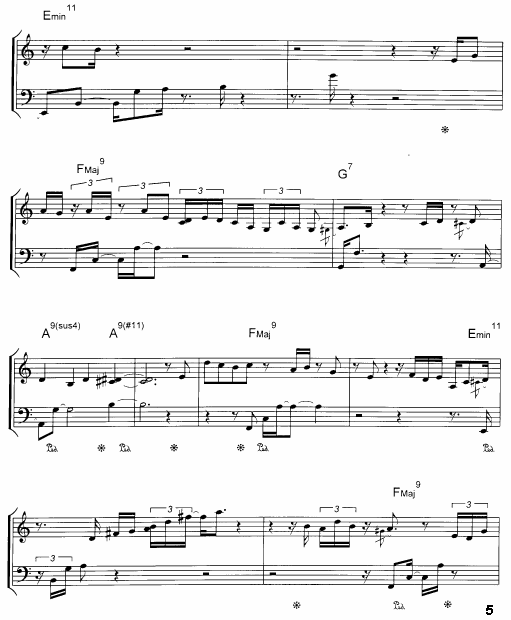
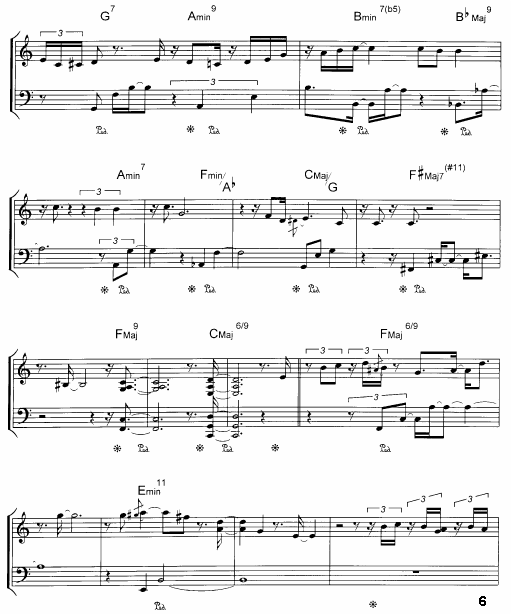
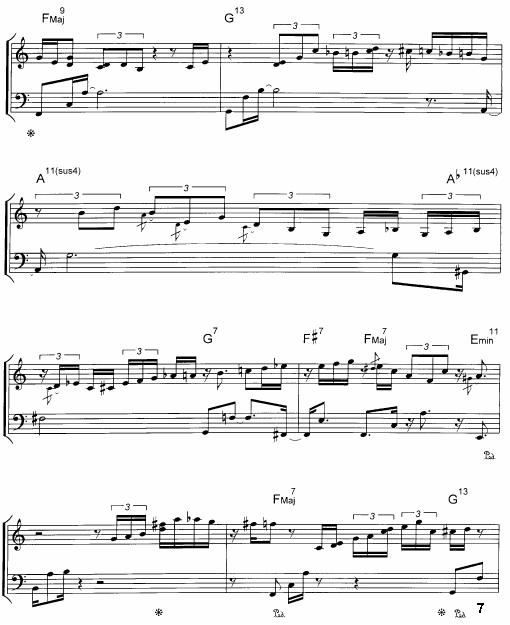
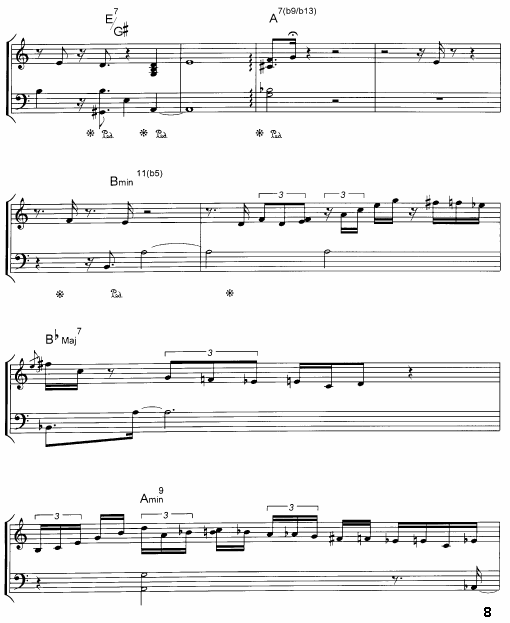



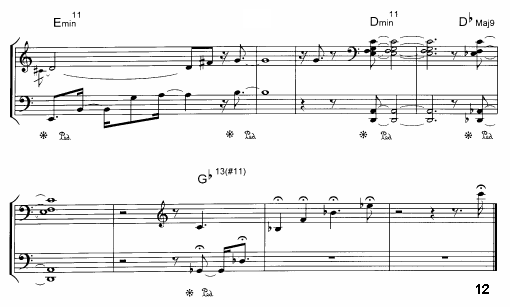
2. Music analysis
a. Structure
Theme exposure page 1 à 4 ( mes. 10 )
1st variation page 4 ( mes. 10 ) à 6 ( mes. 10 )
2nd variation page 6 ( mes. 10 ) à 9 ( mes. 8 )
3rd variation page 9 ( mes. 8 ) à 11 ( mes. 2 )
4th variation page 11 ( mes. 2 ) à fin ( Coda )
This piece is divided into 5 parts, a theme exposure followed by 4 variations in which improvisations are developped.
b. Theme
Based on a 3 note cell ( E - G - A ), this "ballad" melody includes a second element on page 13 ( mes. 8 ), and gives a feeling of solitude.
c. le-rythme
This ballad has no fixed tempo and allows a free motion, punctuated by different improvised colors.
d. Harmony
From the first bars, we can feel a modal D dorian color where the F major chord is a substitution of the D minor chord.
However, the piece remains tonal because of the presence of the A dominant 7th chord on page 1 ( bar 9 ), but oscillating between the D minor and C major chord which concludes each variation, and the coda of the piece on a G b ( tritonic substitution of C ).
The other coloristic element is the chord progression, with bass notes progressing by steps of second : F - E - F - G - A, very common to modal progressions.
d. Improvisation
As said before, the improvisation have a color function as well as a punctuation function ( Eg. page 2 / bars. 4 and 5, or page 5 ).
The scales are mainly based on the diminished modes ( Eg. page 10 / bar. 7 ), or on the ancient modes ( Eg. F# lydian, page 2 / bars 4 and 5 ).